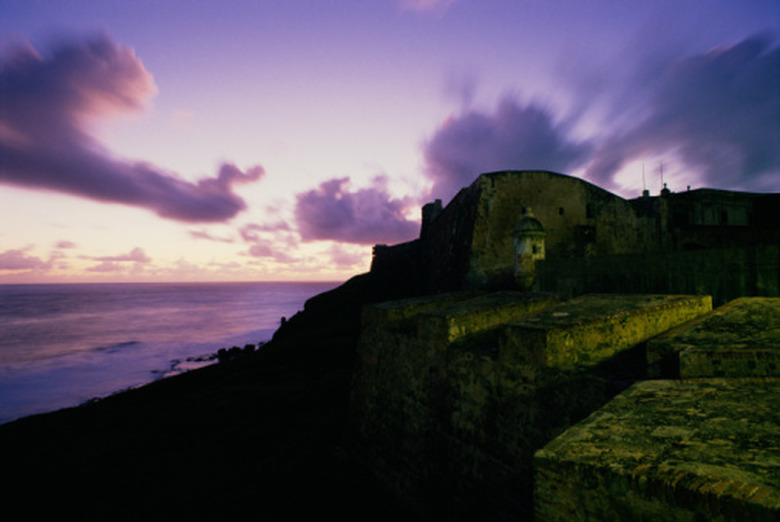What Causes The Bioluminescent Bay?
Located in Puerto Rico, Bioluminescent Bay is famous for its distinctive blue-green glow. The cause of this glow is flagellates, which are tiny micro-organisms. Specifically, the flagellates in Bioluminiscent Bay are dinoflagallates, a specific type of flagellate that is able to make its food via photosynthesis, and it is this process which causes the bay to glow.
Species Description
Species Description
Dinoflagallates are organisms that are part of the Protista kingdom, which means they are single-celled, but are more complex than organisms in the Monera kingdom. Most dinoflagallates are algae, which means they are able to produce their own food through the process of photosynthesis. Dinoflagallates also posses tiny flagellates (Latin for "whip"), which are taillike apparatuses that propel them through the water. Dinoflagallates reproduce asexually; they divide and multiply through the process of mitosis.
Glow
Glow
The first step of photosynthesis in dinoflagallates involves light being captured by their chlorophyll, which has a blue-green pigment. In contrast, most plants have green chlorophyll, which is what makes their leaves green. Additionally, the dinoflagallates' chlorophyll can become luminescent when agitated. Individually, dinoflagallates cannot be seen by the naked human eye; however, sometimes circumstances arise in which billions of dinoflagallates come together and give the water a bright, blue-green glow.
Bioluminescent Bay
Bioluminescent Bay
Bioluminescent Bay is not always bioluminiscent, however, the bay does have two key attributes for attracting dinoflagallates, namely it is small in size and also has a high concentration of mangroves. Mangroves are important to dinoflagallates because they are a good source of vitamin B12, which is essential for dinoflagallates to survive. Because the bay is small in size, water does not rush out of it quickly. Thus, after a heavy rainfall, the mangroves release a large amount of vitamin B12. Dinoflagallates will conglomerate in the bay, and this concentration causes them to agitate and give off their glow.
Other Examples
Other Examples
The glow in the Bioluminescent Bay is an example of a larger phenomena of plankton, known as a plankton bloom. Another large phytoplankton bloom is found near the Arctic Ocean, and another occurs in the Gulf of Maine; both of these blooms appear to be getting larger every year. Some blooms give off a distinctive red bloom; these dinoflagallates create red tides and can be dangerous to sea life. The Red Sea is believed to have gotten it names from these dinoflagallates.
Cite This Article
MLA
Lichtenstein, Drew. "What Causes The Bioluminescent Bay?" sciencing.com, https://www.sciencing.com/causes-bioluminescent-bay-8411952/. 24 April 2017.
APA
Lichtenstein, Drew. (2017, April 24). What Causes The Bioluminescent Bay?. sciencing.com. Retrieved from https://www.sciencing.com/causes-bioluminescent-bay-8411952/
Chicago
Lichtenstein, Drew. What Causes The Bioluminescent Bay? last modified August 30, 2022. https://www.sciencing.com/causes-bioluminescent-bay-8411952/
